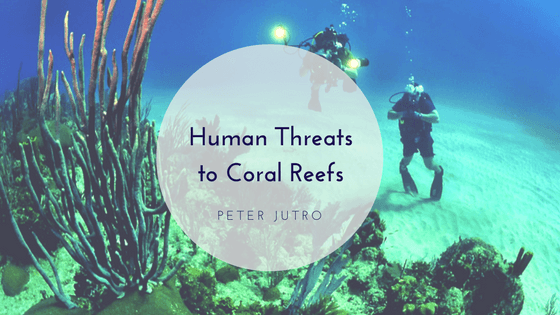Coral reefs, known as the “rainforests of the sea,” are homes to some of the richest biodiversity on earth. They have been around for thousands of years, providing shelter to a quarter of all marine life while occupying only 0.2% of the total ocean. They are both durable and fragile, beautiful and decaying, ancient and vibrant. Even if you’ve never seen a coral reef up close and in person, your existence may be shaped by them. Economists estimate that coral reefs have a global annual economic value of $375 billion and help provide food and resources to over 500 million people in more than 100 countries around the world.
Although coral reefs have withstood the tests of time up until quite recently in the Earth’s history, they are now in a state of decline. Due to a combination of natural and human causes, their continued existence is in danger, with 10% of the world’s coral reefs estimated to already be damaged beyond repair and the rest at risk from local and global stressors. The reason coral reefs’ existence is so precarious is that they rely on a narrow set of environmental conditions to survive.
What is a reef? Reefs are formed by small animals known as polyps, which secrete the calcium carbonate that forms the reef structure. The polyps found in coral reefs have a symbiotic relationship with zooxanthellae, algae that give the polyps their color, oxygen, and the organic products of photosynthesis that they need to survive, while the polyps provide the CO2 and waste products that the algae need for photosynthesis.
Coral reefs are predominantly found in waters that are clear and shallow, with temperatures between 23° and 29° C (77° to 84° F). A variety of phenomena, natural and manmade, can occur to alter those conditions. While coral reefs can be damaged by natural events, much of the damage is accelerated by human interaction. These are some of the human threats to coral reefs and the changes that would need to be made to save them.
Climate Change
Many of the changes to coral reefs that may appear natural are actually caused by global climate change. Many are familiar with the term “bleaching,” as it relates to coral reefs. Increased ocean temperatures and rising sea levels contribute to this condition known as bleaching, in which the coral expels its symbiotic zooxanthellae and loses its color; if the bleaching persists, the coral will lose all of its nutrients and eventually die. The only thing that could MIGHT reverse the bleaching patterns of global warming would be a large-scale, concentrated effort to cut back on carbon emissions and convert to more sustainable resources.
Pollution
A buildup of pollution in oceans poisons coral reefs. Chemicals, industrial waste, sewage, and oil all contribute to the destruction of coral reefs by either direct poisoning or increasing the level of nitrogen in the water, triggering an overgrowth of algae that blocks out sunlight and inhibits the reef biota from conducting photosynthesis. The solution to this threat is to stop dumping waste in the oceans and take better measures to reduce runoff.
Overfishing
Many people around the world rely upon the rich biodiversity of coral reefs as a food source. With over 4,000 species of fish associated with coral reefs, it’s no wonder local communities rely upon their bountiful supply. However, when too many herbivorous seaweed-consuming fish are removed from reefs, a buildup of sunlight-blocking and smothering seaweed growth can occur. If you want to help prevent overfishing, you can start by encouraging sustainable fishing by eating only sustainably-caught fish.
Irresponsible Tourism
Coral reefs are a huge draw for tourists, with coastal tourism making up to 80% of total income in some countries. It’s no wonder that coral reefs, with their explosion of color and marine species, lure scuba divers and photographers. However, coral reefs are very much a look, don’t touch exhibit. Tourism can quickly become destructive when snorkelers and divers trample on the corals or break off pieces as souvenirs. Some gift shops even sell pieces of broken-off coral, and tropical fish native to reefs are being harvested for home aquariums. Play your part and don’t break off pieces of coral reefs or purchase them as souvenirs.
It may seem difficult to stop the tide of coral reef decline, but there may well still be time to reverse the damaging conditions contributing to their destruction. Just as with other human-caused disasters, we have the power to effect change if we desire to. The challenge is getting enough people to see coral reefs for the incredible sources of biodiversity that they are and take action.

